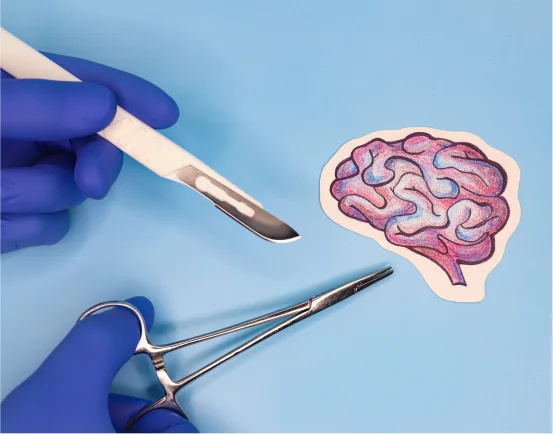Appendectomy is a surgical procedure to remove the appendix, a small, finger-shaped pouch attached to the large intestine. While the appendix has no known vital function, it can become inflamed and infected—a condition known as appendicitis. If left untreated, an inflamed appendix can rupture, leading to life-threatening complications such as peritonitis or abscess formation.
Appendectomy is one of the most common emergency surgeries performed worldwide. The technique used to remove the appendix depends on several factors, including the severity of the appendicitis, the patient’s overall health, the presence of complications, and the surgeon’s expertise.
Types of Appendectomy Surgery
There are two primary approaches to appendectomy:
- Open Appendectomy
- Laparoscopic Appendectomy
A third, less common type—robot-assisted laparoscopic appendectomy—is an advanced form of the laparoscopic approach.
Open Appendectomy
Open appendectomy is the traditional surgical method used for removing the appendix. It has been used for over a century and remains the preferred approach in certain cases.
Procedure:
- The patient is given general anesthesia.
- A single incision (about 2–4 inches long) is made in the lower right side of the abdomen.
- The surgeon locates the inflamed appendix, separates it from surrounding tissues, and removes it.
- If the appendix has ruptured, the surgeon may need to clean the abdominal cavity to remove pus or infection.
- The incision is then closed with sutures or staples.
When Open Appendectomy is Preferred:
- Ruptured appendix with widespread infection
- Presence of abscess or peritonitis
- Previous abdominal surgeries (with scarring or adhesions)
- In hospitals where laparoscopic tools are not available
- Pregnant women in late stages of pregnancy
Advantages:
- Suitable for complicated or advanced appendicitis
- Allows better access to the abdominal cavity if infection has spread
- May be preferred in resource-limited settings
Disadvantages:
- Larger incision and visible scar
- Longer hospital stay and recovery time
- Higher postoperative pain compared to laparoscopic surgery
- Increased risk of wound infections
Laparoscopic Appendectomy
Laparoscopic appendectomy is a minimally invasive surgery that uses several small incisions and specialized instruments. It has become the standard approach for uncomplicated appendicitis in many centers.
Procedure:
- Performed under general anesthesia.
- The surgeon makes 3 to 4 small incisions in the abdomen.
- A laparoscope (a thin tube with a camera) is inserted through one incision, providing a magnified view of the abdominal organs.
- Surgical tools are inserted through the other incisions to cut and remove the appendix.
- The appendix is placed in a retrieval bag and pulled out through one of the incisions.
- The incisions are then closed with stitches or surgical tape.
When Laparoscopic Appendectomy is Preferred:
- Early-stage appendicitis
- Patients with no previous abdominal surgeries
- Patients who are overweight or obese
- Women of childbearing age, for better diagnosis of pelvic pathology
- Elderly patients who benefit from quicker recovery
Advantages:
- Smaller incisions and minimal scarring
- Less postoperative pain
- Shorter hospital stay (often same day or next day discharge)
- Faster recovery and return to normal activities
- Lower risk of wound infection
Disadvantages:
- More expensive than open surgery
- Not suitable for patients with extensive infection or ruptured appendix
- Longer operative time in some cases
- Requires specialized surgical equipment and training=
Robot-Assisted Laparoscopic Appendectomy
This is a newer technique where the laparoscopic procedure is performed with the assistance of a robotic surgical system, such as the da Vinci Surgical System. The surgeon controls robotic arms from a console with precise movements.
Procedure:
- Similar to laparoscopic appendectomy
- The robotic system provides high-definition 3D visualization and enhanced dexterity
Advantages:
- High precision in tissue dissection and suturing
- Reduced blood loss
- Potential for even less pain and faster recovery
Disadvantages:
- Limited availability
- High cost
- Not significantly better outcomes than standard laparoscopy in routine cases
This type of surgery is mostly used in advanced surgical centers and teaching hospitals.
Choosing the Right Type of Appendectomy
The decision on which method to use depends on several factors:
- Severity of Appendicitis :- If the appendix is unruptured, laparoscopic surgery is usually preferred. If it is ruptured with pus or abscess, open surgery is often safer.
- Patient Health and History :- Patients with previous abdominal surgeries, bleeding disorders, or extensive adhesions may need an open procedure.
- Availability of Surgical Equipment :- In rural or resource-limited hospitals, open surgery may be the only option.
- Surgeon’s Expertise :- The choice of surgery may also depend on the training and experience of the surgical team.
Recovery After Appendectomy
Hospital Stay:
- Laparoscopic surgery :- Most patients go home within 24 hours
- Open surgery :- May require 2–3 days of hospital observation
Return to Activities:
- Laparoscopic :- Light activity in a few days, full recovery in 1–2 weeks
- Open :- Light activity in a week, full recovery in 2–4 weeks
Postoperative Care:
- Keep incisions clean and dry
- Avoid heavy lifting or strenuous exercise
- Take medications as prescribed
- Watch for signs of infection (fever, redness, swelling, drainage)
Conclusion
Appendectomy is a critical and commonly performed surgery for appendicitis. Understanding the types of appendectomy surgeries—open, laparoscopic, and robotic—helps patients and families make informed decisions based on the severity of the condition, medical history, and resources available.
While laparoscopic appendectomy has become the preferred method for many, open surgery still plays a vital role in complicated cases. Robotic surgery, though promising, is still emerging and best suited for select cases in advanced settings.
With timely diagnosis and appropriate surgical care, most patients recover quickly and resume their normal lives with minimal long-term effects.























